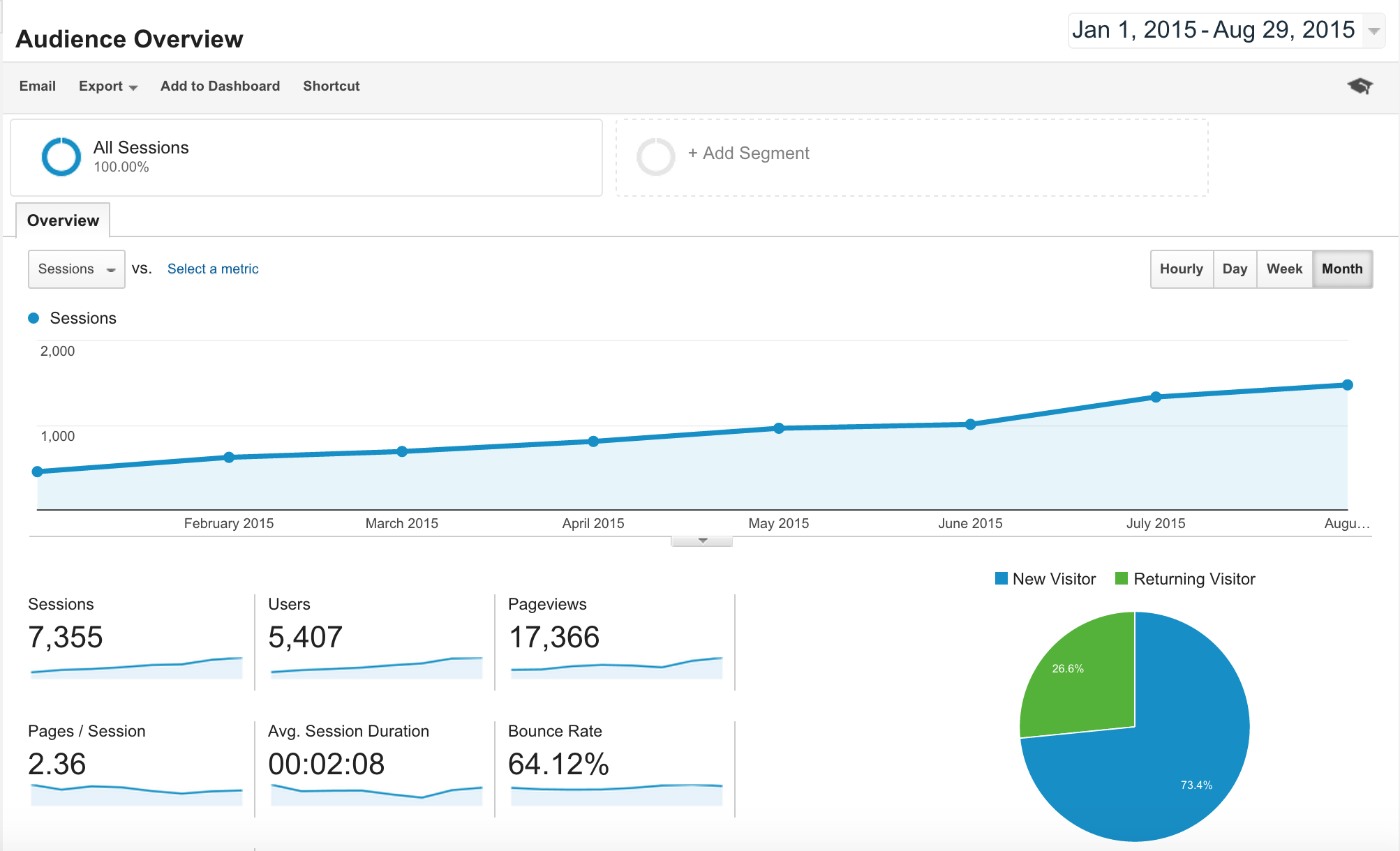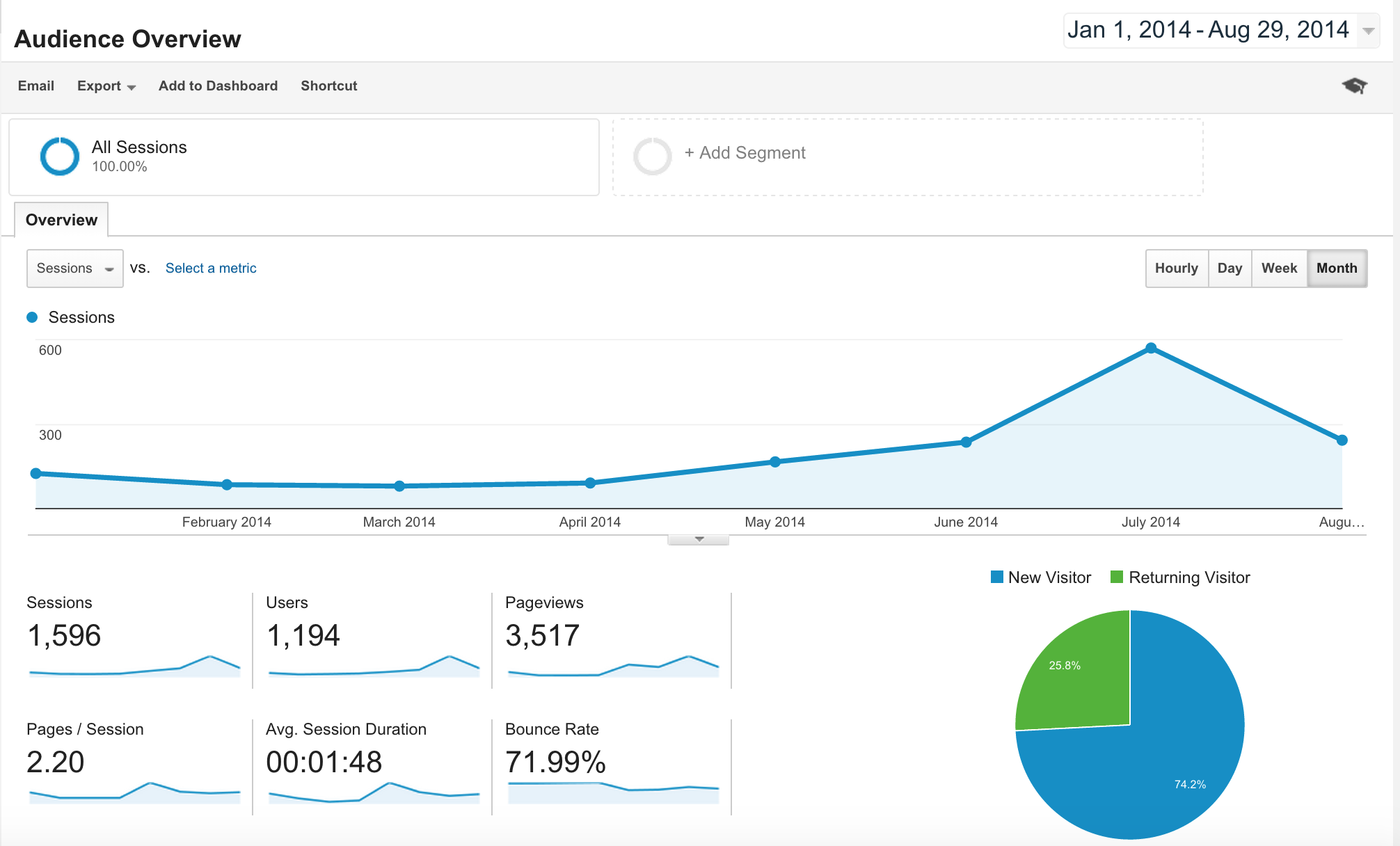Learning Hub | Content Marketing
How We Tripled Our Website’s Traffic in 8 Months
August 29, 2015 | Jon Teodoro

I hated writing in high school. The same applied to reading. Not because I wasn’t capable of doing either of them, but I just didn’t have the desire to. When it came to turning in papers for my AP English courses, my work was always subpar because I simply didn’t care for what I was writing about.
Eleven years later, here I am writing a blog post about content marketing and SEO. My mindset has shifted dramatically because now I am writing about things that I actually give two shits about. I find it funny because the one thing that I loathed in high school ended up being a critical component to our online marketing strategy. It also allowed us to triple our traffic in only 8 months.

How Did Writing Help You Do That?!
Nowadays, people often turn to the web first to find information. Though strategic content creation, I was able to offer people valuable information that would help them solve their problems. I also added a writer onto our team to help our agency scale up our blog writing campaigns. This is the classic content marketing paradigm: give people valuable content in exchange for their attention to your brand’s voice.
So in essence, content marketing is how we tripled our website’s traffic in 8 months.
how did you get people to find your content?
Our team utilized two main channels to get the word out about our content: social media and organic search.
To help us make sure that we were targeting the right keywords and distributing our content to the right people, we invested into the HubSpot platform. HubSpot was a single, centralized place for us to manage our entire content marketing, SEO, and social media campaigns, enabling us to find and track the best opportunities to spread our knowledge and solve our target audience’s problems.
“But I’ve Been Writing Blogs And I’m Not Seeing Results”
I didn’t see results when I first started writing either. I blogged about once or twice a month for about year and saw minimal results. Here’s an actual screenshot of our analytics from the same period of time last year:

We started off the year with 125 visits per month and ended with a high point of 254 visits (the spike in traffic was due to an offline campaign we ran).
I was about to give up. Having invested hundreds of hours into learning about content marketing I felt duped. Was content marketing just a hype or was I just doing it wrong? And then, the “aha” moment came when I noticed that one of my blogs started to gain traction.

I found it a little ironic that I learned my most valuable lesson in content marketing after writing a blog about content marketing.
What I Was Doing Wrong And How We Learned From It
I realized what I was doing wrong. I didn’t identify a target audience and therefore my content wasn’t resonating with anyone. The reason why the blog above (Content Marketing For Small Businesses: Three Great Examples) was actually starting to generate traffic is that I had actually identified an audience (small business owners) and I wrote about a topic that was, and still is, popular (content marketing).
With an extra brain on hand and with the help of some marketing automation tools, we were able to do three key things faster and easier which allowed us to scale up even more:
- Refine our target personas – “Small business owners” wasn’t specific enough. We needed to get past the demographics and into the psychographics of our readers. Is our audience on Facebook/Twitter/LinkedIn? What offline publications do they read? What are their job responsibilities or roles? Drilling things down to a granular level exponentially expanded the possibilities of topics that our audience(s) would care about. We cover developing B2B buyer personas here.
- Find and track the “right” keyword opportunities – In the past, we would target keywords based solely on monthly searches. Besides, more monthly searches equals more traffic, right? Not always. Higher search demand also comes along with higher competition. Instead of focusing only on search demand, we decided to also focus on the ranking difficulty of a keyword. This enabled us to create content around keywords where there was a nice balance of traffic and ranking potential, allowing us to land on the front page for popular search queries faster with minimal link building and manual outreach.
- Target the right people through social media – Gone are the days of organic social media reach. That’s not necessarily a bad thing, however. Because social media companies are pushing ads more and more, social media targeting has evolved right along with it. By aligning our advertising segments with our target personas’ behaviors, we were able to get more bang for the buck from our social media ad spend. Also, though social media monitoring, we were able to listen to what topics people were talking about and then start conversations with them online, pointing them to our content.
How To Increase Your Traffic, TL;DR
First, identify your audience. Then, listen to what problems they are having and use marketing automation tools to help you identify search queries that are relatively low in competition that still have decent search demand. Use social media advertising and marketing tools to get your message out to the right audience on that channel as well. Also make sure that you write great content and that you track everything so you can measure how well your campaigns are performing.
